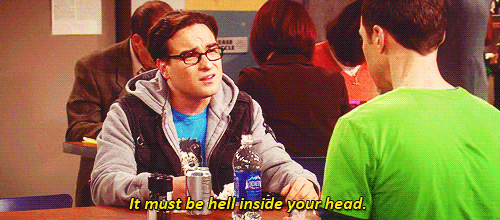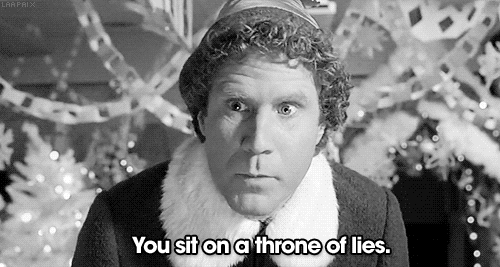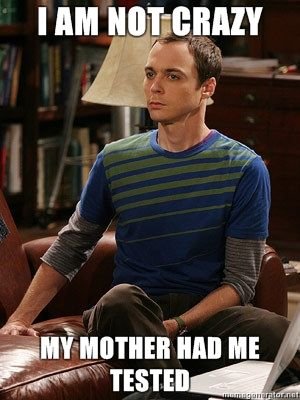
Truth is like driving in a city with perfectly square blocks and numbered streets. Reality is like driving in Boston, MA, USA. In Boston every street is one way, the wrong way. One of my father-in-law’s favorite sayings is “you can’t get there from here”. In truth, that statement is false. In experiential reality, it often feels true. While driving in Boston you can see the destination, but you cannot find the way. This holds true for most things in life. At your journey’s end in Boston, you realize you can “get there from here,” you just could not see the way.
Truth is often perceived in the same way: you can’t find it, you can’t prove it, and sometimes you can’t even see it. Modernity in academics has decided to solve the problem of hidden truth in the common false colloquial sayings:
1) There is no truth
2) All truth is truth
3) You believe what you believe and I will believe what I believe and both are true.

Riding in my father’s car a little while back, I noticed a very annoying squeaking noise. He said, “What noise?” I said, “That really annoying noise.” The truth is, the noise was there he just couldn’t hear it. Look at the following proofs.
There is a sound in the car: true or false?
1) My father and I ride in a car, only I can hear a noise.
2) The pitch gets higher so neither of us can hear the noise. Is it still there?
3) We pick up my dog, Buddy, who tilts head, hears the noise and tries to find it.
4) The noise gets higher, none of us hear it. Is it still there?
5) We enlist an acoustic engineer and swing by his house to pick up some special equipment, which detects a very high frequency vibration in the air.
We learn three things from the above:
1) The noise is there even if the occupants of the car cannot hear it. Thus, truth is irrelevant of perception. I will say more about this later.
2) Truth is conditional upon definition. If you define sound as something heard, then in most instances, 2, 4, and 5 above have no noise. If you define a sound as a vibration in the air, then 1,2,3,4, and 5 are all true. This doesn’t mean truth is relative or that the “sound” itself changes, only that how something is defined can change the answer to a question. Either way, the physical reality remains the same.
3) High pitched sounds are only annoying if you hear them.
4) On Steemit, Steemians must remember that people may misunderstand each other purely due to definition. Steemit has people from many different cultures, language and education, so it’s something we should all be aware of.

Truth is colored by perception. Police often find and it is well documented that eyewitness accounts often disagree on just about everything. About nine years ago, while walking in a crosswalk, I was hit by a car. My wife, who was not hit, told the reporting officer that car was a small gray compact car, most likely a Honda. I, on the other hand, identified the car as a larger Beige American model Buick. (To answer your question, no I did not hit my head.) Pluralists handle this situation by saying the car was both and no one can know.
The police did not find the car and given our descriptions I am not surprised. However, if the police had found the car, they would have found a car with a specific color size, model, and make. Had there been a high quality camera that captured the license plate and an accurate description of the car, I have no doubt the police would have found the car. Our police are quite adept at closing easy cases. Nonetheless, the descriptions proved fruitless and the perpetrator escaped the consequences.
Truth in this particular case could have been observed by a camera. Often truth would need a much more sophisticated instrument, both physical and metaphysical, to determine it.
According to Descartes’ philosophy and demonstrated by the above accounts, truth must be cognitive not perceptual.
Picture this story: A mother is called to school for a meeting with the administrator. In the waiting room she finds her teenage child sitting and waiting. As most mothers do, she began chiding him and complaining about the time she was missing at work. With a typical adolescent response, the child says “I didn’t do it.” This mother chooses to reply: “That’s great. Let’s go straighten this out then.” They are called into the administrator’s office. The mother quickly jumps in and says, “I had to leave work for this. Why am I here? My son didn’t do it.” The principal says, “How do you know your son did not commit the act of vandalism?” The mother quickly explains how good her child is, that he has never lied, and that her child said, “I didn’t do it.”
The principal has done his due diligence and lists the numerous teachers and students who witnessed the act. The mother responds: “They are lying.” Finally, in disgust, the principal pulls out a video tape and plays it for the mother. The tape easily and clearly identifies her son, the student in question. The principal now assumes the truth is out and moves on to the sentencing phase.
“That’s not him,” interjects the mother. The principal, now curious, says, “I have a list of witness and a very clear video tape.” She responds, “He said he didn’t do it and don’t you think I can recognize my own son?”

Many would believe the mother was just covering for her son. However, we are all susceptible to thought coercion, subversion, and basic illusion.
The problem is: if truth is purely cognitive, how is the mother incorrect?
Science has therefore come up with their measure of truth, the laws and theories of science. Yet even this type of truth is based on condition. Consider a scientist who comes up with a theory that a three pound rock will always fall in the same amount of time from a certain height and with certain weather conditions. 800,000 scientists all follow the scientific method, make observations, and test the prediction. They find this theory to be true and call it a law. The force of gravity is 9.807 meters per second squared. Then 1 scientist jetpacks to Mars and find the law does not hold up. The force of gravity on Mars is 3.711 meters per second squared. The fact that a stone of a particular weight will drop in a certain amount of time from a given height within a given set of environmental parameters is dependent on the condition that the stone is being dropped on Earth, not Mars. Thus we have Newton’s law of universal gravitation: “a particle attracts every other particle in the universe using a force that is directly proportional to the product of their masses and inversely proportional to the square of the distance between them.” In this way, laws are proven and then disproven once more experience or knowledge becomes available.

In scientific observation, a person tries to move from subjective observation to objective observations. It is one of the basic components of scientific research. Why? It is in attempt to remove the bias of perception and even cognition, by recording unfiltered data.
Sir Karl Popper sums up the relation between good science and truth as:
“The wrong view of science betrays itself in the craving to be right; for it is not his possession of knowledge, of irrefutable truth, that makes the man of science, but his persistent and recklessly critical quest for truth.”
Let’s go back to the mother defending her child. The principal and the mother cannot both be right. Either her child did the vandalism or he didn’t. In this case, the mother is either lying to protect her son or a moron incapable of understanding the facts. The truth is not perceptual. The truth is cognitive, but subject to the capability of that cognition.
Modernity believes that truth is affected by perception, so there must be no truth or all truths must be true. But here is where mathematics steps in. Mathematics, in its original conception, was a way to measure physical and material truths. If I have two apples and pick up another two I have four, an immutable truth, at least until I eat one. However, mankind has discovered that even if you remove physical components, and study it in the purely theoretical and metaphysical, unperceived realm, mathematical laws can still be tested and proven. 2 + 2 = 4 whether or not I have apples.
And yet even in this straightforward, clearly definitive branch of human intellect – mathematics – the idea of multiple paths to truth has snuck in. Consider Euclidean and non-Euclidean geometry, for example. “Thus the pendulum has gone full swing: We started with a robust conception of mathematics and maximalist conception of philosophy (where philosophy comes before the exact sciences) and through the influence of two scientific revolutions we were led to a pluralist conception of mathematics and minimalist conception of philosophy (where philosophy comes after the exact sciences).” Are there multiple ways to define the same concept, or are there multiple truths? Carnap’s theories on mathematical pluralism may be very intriguing, but not so definitive. For more detail, check out Koellner’s article - Truth in Mathematics: The Question of Pluralism (http://logic.harvard.edu/koellner/TM.pdf).
Mathematical pluralism cannot exist because it cannot define itself. Proofs exist on both sides – that mathematical pluralism is true and that mathematical pluralism is false. And yet based on the very foundation of pluralism, both of these must be true, rendering both, along with mathematical pluralism, invalid.
Truth is immutable, but can be temporal. People often like to bring up Schrodinger’s paradox about the cat being both dead and alive until you open the box. However, a being that is non-corporeal, omniscient or, quite frankly, just places their hand on the box to see if it is warm, can determine if that cat is dead or alive without opening the box.
Therefore, truth is measurable if you have their right tools.

I used to think I was crazy. There are times in my darkest hours when I was confronted with truth contrary to my experience and perception and I questioned my sanity. In fact, I believe that only through questioning our sanity can we find it.
“I think therefore I am, but what if everything I think is wrong.” The first step to finding truth is realizing you probably have not found it yet.
Picture this illustration: a supreme being exists. Then picture that this god is infinite and has the ability to create time itself. Then picture this god is omniscient (all knowing). He has a complete grasp on perception, science, mathematics, physics and metaphysics. This god would then be the measure of truth and himself easily able to see that truth.
Science, mathematics and philosophy all march forward every day and mankind’s understanding of the world grows. We prove and disprove theories and scientific laws. The problem is that we as human beings will never be infinite of omniscient.
To truly hold a belief, a person must continually process new information, be willing to engage those with contrary beliefs, and be willing to learn about their perception of reality and truth.
Why? Because if someone shows me a picture from space of a round world, on an unaltered Polaroid picture and I still believe the world if flat, then I am fool. In the same way, if someone could show me a picture of the throne of God and it was empty, I must believe it. Unfortunately, we as mankind have a very difficult time finding definitive truth because it is temporal and colored by perception.
Steemit has introduced many of us to a new world of open discourse. I have very strongly held beliefs, so strongly held that I spent 8 years in higher education learning about them. It’s hard to change my opinions on a great many things. However, if I am unwilling to change my beliefs when presented with incontrovertible truth then my beliefs are worthless.
I challenge all Steemians to read and learn and allow themselves to be changed by the words and thoughts of others. Often the more I learn the stronger my own opinions become. While I will never be omniscient, my goal is to move toward truth and knowledge as much as I can.
If a person disagrees with another, and both have great evidence for the point, it does not mean pluralism is correct and they are both right. It means that neither of them have the perceptive ability or cognition to definitively know the truth, often because they do not have access to a measure of truth greater than themselves.
Thanks for this nice article.
In science, paradigms and postulates are indeed changing with time, new data, etc. What is thought to be correct today may jut be some approximation (as it seems to work well today, it cannot be totally wrong) of some more fundamental theory that is still to be discovered.
Downvoting a post can decrease pending rewards and make it less visible. Common reasons:
Submit
I like how you put that!
Downvoting a post can decrease pending rewards and make it less visible. Common reasons:
Submit
Hi melek, some reactions to this:
It seems to me that what you are mostly focused on in your writing is human perception, and on that point I will have to agree — not only are our physical capabilities in experiencing reality crude, they are also prone to mistakes (our minds are not exact machines, and can play tricks on us all the time). From this perspective a third-party observer, or better yet a higher quality device such as a camera can indeed correct our perceptual discrepancies and rectify our data.
However what is a different story altogether (and indeed the topic of my article at https://steemit.com/philosophy/@sergeypotapov/you-are-at-the-center-of-the-universe-and-you-have-the-whole-thing-to-yourself) is the existence of a fundamentally objective reality, completely separate from any observer whatsoever.
In your examples you list such things as high-definition cameras and the perception of warmth emanating from a the box with the cat, etc. But these are all observational methods, and even if they are recorded by a device, their end destination is that of a conscious being, for purposes of evaluation.
But the most important aspect to consider here, is that we are still talking about very crude, very rough perception of what we consider to be reality. Let's take your example with the car. You observe it one way, somebody else in another. An HD camera can clear all misunderstandings on that level. However that is only on the level of describing the outside of the car. What about the interior of it? Well, perhaps an x-ray machine could come to the aid of the HD camera, and help sort that out. Alright, but what about the composition of the paint of the car? The materials used in building it? As you wish to know more and more "truth" about a structure you need more and more techniques to get it. Eventually you will be asking questions about its structure on the atomic and subatomic levels, and this is where things get tricky. Because we are now trying to describe the car on a subatomic level, we experience quantum effects, and foregoing all the details as to how and why, this eventually means that our observing of the car will have an effect on the car itself, thus we as observers are fundamentally linked with the observed.
While we can describe truth on our crude and rough levels and find an optimal solution as to what the objective truth is on our human scale, there is simply no way to do that in an all-encompassing manner when it comes to describing the more minute details of existence.
Downvoting a post can decrease pending rewards and make it less visible. Common reasons:
Submit
I think we sort of agree on that. On the human scale we can't understand an infinite truth. My supposition is that even though we can't see or understand it, entire truth still exists outside of ourselves.
Thanks for a great response. I think we might be down to a difference: measurement.
Anyone who hasn't read @sergeypotapov (the article in his response above), it is an interesting read.
Downvoting a post can decrease pending rewards and make it less visible. Common reasons:
Submit
Now that's deep........ yet interesting
Downvoting a post can decrease pending rewards and make it less visible. Common reasons:
Submit
This is a very interesting way of analyzing human perception. I really like your way.
Downvoting a post can decrease pending rewards and make it less visible. Common reasons:
Submit
Thanks :)
Downvoting a post can decrease pending rewards and make it less visible. Common reasons:
Submit
another awesome post of yours !
Downvoting a post can decrease pending rewards and make it less visible. Common reasons:
Submit
Thanks!
Downvoting a post can decrease pending rewards and make it less visible. Common reasons:
Submit